Related Research Articles
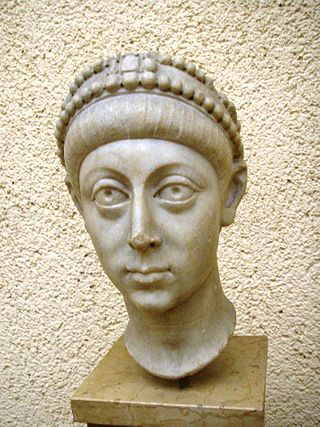
Arcadius was Roman emperor from 383 to his death in 408. He was the eldest son of the Augustus Theodosius I and his first wife Aelia Flaccilla, and the brother of Honorius. Arcadius ruled the eastern half of the empire from 395, when their father died, while Honorius ruled the west. A weak ruler, his reign was dominated by a series of powerful ministers and by his wife, Aelia Eudoxia.

Libanius was a teacher of rhetoric of the Sophist school in the Eastern Roman Empire. His prolific writings make him one of the best documented teachers of higher education in the ancient world and a critical source of history of the Greek East during the 4th century AD. During the rise of Christian hegemony in the later Roman Empire, he remained unconverted and in religious matters was a pagan Hellene.

Classical antiquity, also known as the classical era, classical period, classical age, or simply antiquity, is the period of cultural European history between the 8th century BC and the 5th century AD comprising the interwoven civilizations of ancient Greece and ancient Rome known together as the Greco-Roman world, centered on the Mediterranean Basin. It is the period during which ancient Greece and ancient Rome flourished and had major influence throughout much of Europe, North Africa, and West Asia.

Aelia Pulcheria was an Eastern Roman empress who advised her brother, the emperor Theodosius II, during his minority and then became wife to emperor Marcian from November 450 to her death in 453.
Flavius Fravitta was a leader of the Goths and a top-ranking officer in the army of the Eastern Roman Empire.

Peter Robert Lamont Brown is an Irish historian. He is the Rollins Professor of History Emeritus at Princeton University. Brown is credited with having brought coherence to the field of Late Antiquity, and is often regarded as the inventor of said field. His work has concerned, in particular, the religious culture of the later Roman Empire and early medieval Europe, and the relation between religion and society.
Christianization is a term for the specific type of change that occurs when someone or something has been or is being converted to Christianity. Christianization has, for the most part, spread through missions by individual conversions and has, in most instances, been the result of violence by governments, military and Christians. Christianization is also the term used to designate the conversion of previously non-Christian practices, spaces and places to Christian uses and names. In a third manner, the term has been used to describe the changes that naturally emerge in a nation when sufficient numbers of individuals convert, or when secular leaders require those changes. Christianization of a nation is an ongoing process.
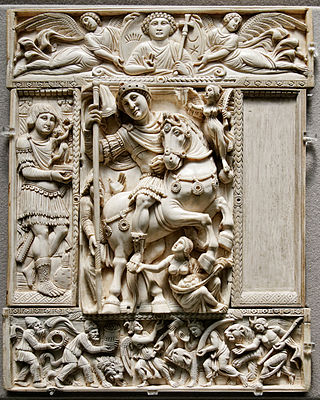
Late antiquity is sometimes defined as spanning from the end of classical antiquity to the local start of the Middle Ages, from around the late 3rd century up to the 7th or 8th century in Europe and adjacent areas bordering the Mediterranean Basin depending on location. The popularisation of this periodization in English has generally been credited to historian Peter Brown, who proposed a period between 150–750 AD. The Oxford Centre for Late Antiquity defines it as "the period between approximately 250 and 750 AD". Precise boundaries for the period are a continuing matter of debate. In the West, its end was earlier, with the start of the Early Middle Ages typically placed in the 6th century, or even earlier on the edges of the Western Roman Empire.
The Circumcellions or Agonistici were bands of Roman Christian radicals in North Africa in the early to mid-4th century. They were considered heretical by the Catholic Church. They were initially concerned with remedying social grievances, but they became linked with the Donatist sect. They condemned poverty and slavery, and advocated canceling debt and freeing slaves.

The growth of Christianity from its obscure origin c. 40 AD, with fewer than 1,000 followers, to being the majority religion of the entire Roman Empire by AD 400, has been examined through a wide variety of historiographical approaches.
The Primate of Africa is an honorific title in the Roman Catholic church, but in early Christianity was the leading bishop (primas) in Africa except for Mauretania which was under the bishop of Rome and Egypt which was suffragan to Alexandria.
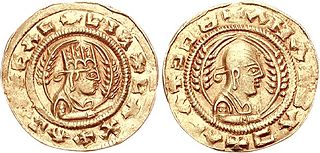
The Kingdom of Aksum also known as the Kingdom of Axum, or the Aksumite Empire, was a kingdom in East Africa and South Arabia from classical antiquity to the Middle Ages. Based in what is now northern Ethiopia and Eritrea, and spanning present-day Djibouti and Sudan. Emerging from the earlier Dʿmt civilization, the kingdom was founded in 1st century. The city of Axum served as the kingdom's capital for many centuries until it relocated to Kubar in the 9th century due to declining trade connections and recurring external invasions.

Sétifis, was a Roman town located in northeastern Algeria. It was the capital of the Roman province called Mauretania Sitifensis, and it is today Setif in the Sétif Province (Algeria).

Henchir-Loulou a locality and archaeology site near the modern town of Aïn Makhlouf, Algeria. It is the site of an ancient Roman Era town.
Vageata, also known as Vageatensis, was a Roman-Berber town in the province of Mauretania Caesariensis. It is also known as Bagatensis, and epigraphical evidence remains attesting to this etymology, due to the interchange of 'v' for 'b' is a common phenomenon in Latin and Greek place names.
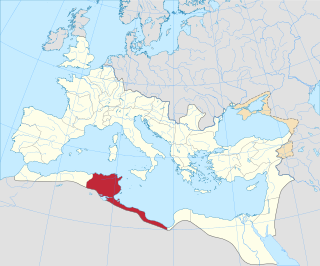
Sutunura was a Roman era civitas in the Roman province of Africa and is tentatively identified with ruins near Aïn-El-Askerm, Rdir-Es-Soltan in modern Tunisia.(36° 34' 29" North, 9°59'29"East) 50 km from Carthage. The location being confirmed with inscription remains in situ and is nearby to Koudiat es Somra, Jebel Barrou and Ghedir Soltane.
Marcarius was an imperial notary sent in 340 to enforce an imperial edict against the Donatist community, in Bagai, Numidia, Roman North Africa.

El Kenissia is a locality in Tunisia, North Africa.
Wendy Mayer is an Australian scholar in late antiquity and religion who is a research professor and associate dean for research at Australian Lutheran College, dean of research strategy for the University of Divinity, and honorary research fellow at the University of South Africa. She is known for her work on John Chrysostom and on early Christian preaching.
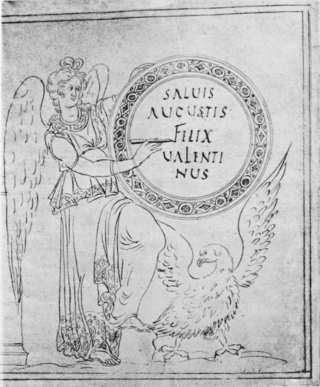
Michele Renee Salzman is a distinguished professor of history at the University of California, Riverside. She is an expert on the religious and social history of late antiquity.
References
- ↑ "Christians and Romans: Aspiration, Assimilation, and Conflict in the North African Countryside". hollis.harvard.edu. Retrieved 2022-08-17.
- ↑ Peasant and Empire in Christian North Africa.
- ↑ Stone, David L. (2013). "Peasant and Empire in Christian North Africa by Leslie Dossey (review)". Journal of Social History. 46 (4): 1099–1101. ISSN 1527-1897.